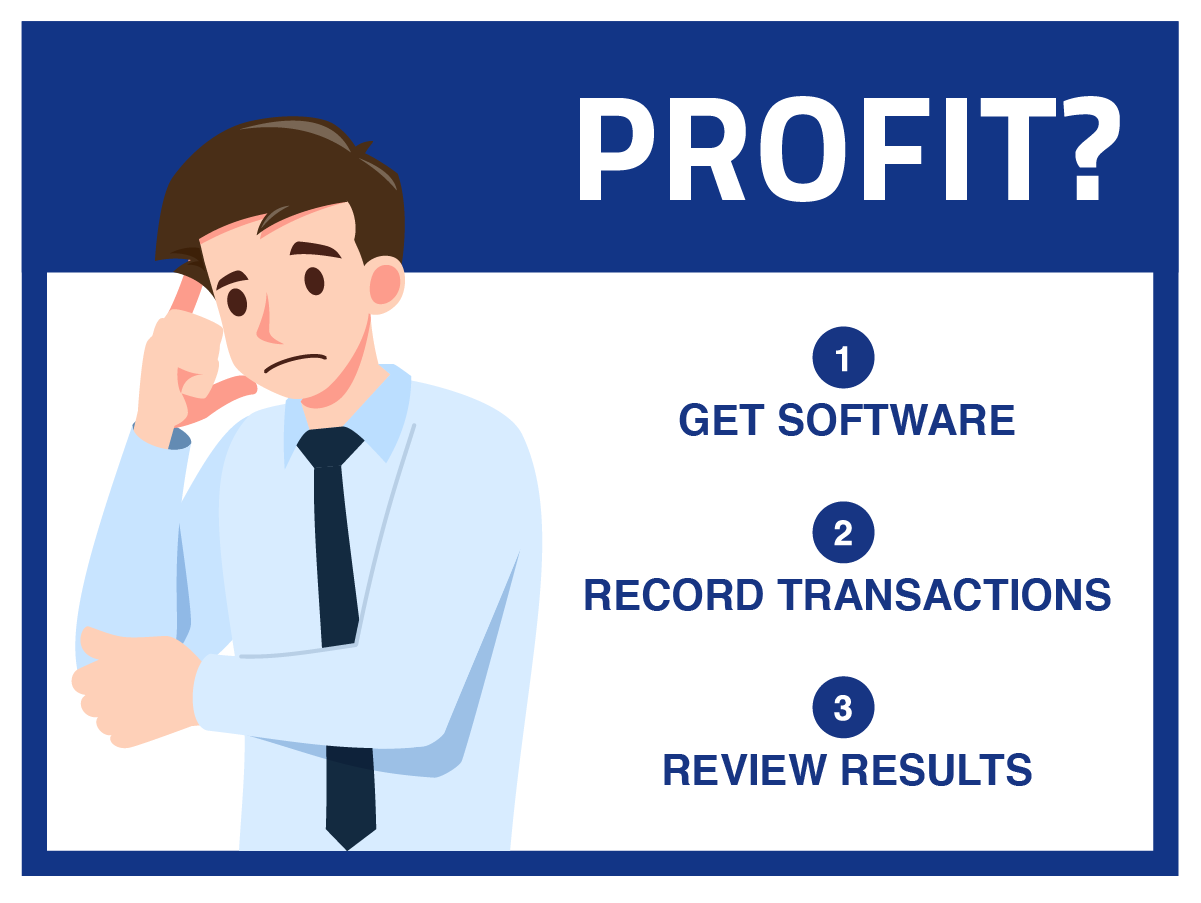Topic 4: Does your business make a profit?
Fundamentals of Business
Are you one of the millions of Americans who recently quit their job and started your own business? Your business exists to make a profit by providing goods and services to customers. But how do you know if the business makes a profit? Simply counting the cash in and cash out can be good enough for tax reporting (i.e., cash basis), but it is not enough to know your profitability. I know business owners who have operated this way, and it inevitably creates problems.
To figure out if you make a profit, you will need to use software, record all transactions, and then review the results.

Step 1: Get Software
Sign up for software to track income and expenses. I recommend at QuickBooks Online which is one of the most popular choices, but there are many others with different price points and features. I also recommend software that has an integrated payroll module. If you sell products, also look for integrated inventory and point-of-sale software.
After you have either purchased or subscribed to the software, the main steps to get setup are creating a chart of accounts to organize your transactions, adding customers and vendors, creating sales and inventory items, and adding employees.
For small businesses, especially those starting out, owners may be tempted to only use an Excel spreadsheet to track revenue and expenses. Although it is possible to get by this way, it is a missed opportunity to get better information about the business. It may also cause the business to misinterpret the results leading to the wrong decisions.
Be cautious using online reviews to help choose software. These sites may pay for reviews and not publish negative reviews. The best strategy is to get recommendations from people you know, and then choose the option that is the easiest to quit in case the software does not meet all your needs.
Step 2: Record Transactions
Now that you are setup, you will need to record all transactions by creating invoices to customers and paying bills from vendors. Then record any other transactions as needed. Many software options, including QuickBooks Online, have a feature to download bank activity into the software. This helps match the bank activity to any existing transactions and to record new transactions. Then record journal entry transactions as necessary for any depreciation and prepaid or accrued expenses.
The amount of time to do this will depend on the size and type of your business, and you should plan on at least a few hours a month. You can hire a local bookkeeper to train you to use the software or to help do some or all the monthly work.
Step 3: Review Results
Each month run the income statement report (profit and loss / P&L) to see if the business is making a profit.
The report will show total revenue earned which includes every sale by cash or for which an invoice was created. If it is a manufacturing business, the report will also show the cost of goods sold which is the cost of creating the product. And finally, the report will list the total expenses for selling, general, and administrative (i.e., SG&A or G&A).
Another benefit of using software are the reporting features. Take advantage of these reports by running comparisons against the prior month, quarter, and year. QuickBooks Online also includes graphs to view the long-term trends.
Then determine if any actions are needed such as increasing sales, reducing expenses, or hiring more employees.
Following these steps will help determine if your business is profitable. Investing the time and resources for preparing an income statement each month will pay dividends with better information and decisions.
Spectrum Small Business Advisors is here to help. Contact James Gargiulo at (949) 351-1538 or James@SpectrumSBA.com for assistance with your business.
